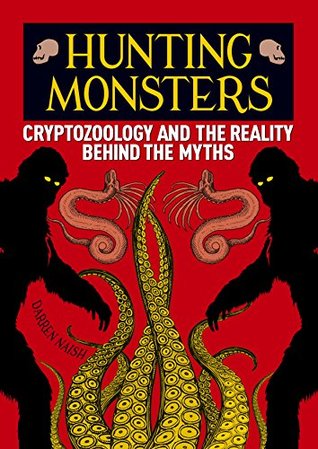More on this book
Community
Kindle Notes & Highlights
Like many people, I became interested in cryptozoology because – as a much younger person – I originally thought it likely and plausible that such mainstays of cryptozoology as bigfoot, the yeti, sea monsters and so on probably did exist. It seemed only a matter of time before physical remains confirmed their existence. Today, the complete absence of convincing evidence for cryptids – combined with indications that there are explanations of claimed sightings of mystery animals – leads me mostly to regard cryptozoology as a hybrid subject that, while sometimes incorporating information from
...more
The fact that superstar cryptids are almost certainly not real doesn’t make ‘post-cryptid cryptozoology’ any less interesting; in fact, it might even be far more interesting as a subject of investigation and novel research.
The European colonists of North America saw horse-headed monsters and giant serpents in the enormous lakes of the United States and Canada and interpreted indigenous legends about horned water serpents, ‘water panthers’ and giant scaly fish-monsters as descriptions of the same creatures. A sort of cultural hybrid legend was the inevitable consequence. This cultural background exists regardless of any interpretation of monsters as real, flesh and blood animals. Whenever people visit lakes, lochs, pools and so on, it is therefore inevitable that this cultural background is there in their minds,
...more
The notion that giant monsters lurk in lakes and pools has to be regarded as one of the most pervasive, persistent myths of modern times, even at a time when people are increasingly distant from nature, and more divorced than ever from the animals and environments present on their very doorsteps.
‘lake monsters’ are not obscure creatures outside the realm of normal awareness about the natural world, but an integral part of how people imagine the world.
The entire phenomenon seems to be part of a human-wide idea that we live alongside near-humans or sub-humans – animals that are like us overall, but somehow bridge the gap between humanity and the rest of nature. The fact that all human cultures have a ‘need’ for near-human monsters of this sort probably explains why creatures interpreted as undiscovered hair-covered hominids are so ubiquitous. In other words, the idea of the near-human monster is always there in the human psyche, and it has never gone away.
It’s a fact that many prehistoric animals are surprisingly prevalent in our culture – images of dinosaurs, pterosaurs, Dimetrodon, sabre-toothed cats and mammoths are readily encountered via cartoons, movies, advertising and the products of the toy and entertainment industry. The result is that there are a great many people who have some concept of what a pterodactyl is, yet are stunningly naive as goes the living animals that live on their own doorstep.
studies by psychologists have shown that people who believe in the paranormal are more likely to interpret the phenomena they experience in nature as ‘paranormal’.
In 2009, journalist Mike Leggett attended a bigfoot conference and hoped to see ‘crazy’ talks where bigfoot was interpreted as an inter-dimensional shape-shifter or a psychic being that spoke regularly to beings from outer space. Instead, he was disappointed to find the conference-goers discussing ecological correlations, inferred territorial patterns and satellite tracking.
Several investigators have noted how the bigfoot research community consists predominantly of middle-class, middle-aged white men; this statement is not, of course, meant to describe everyone within this research community: it’s a generalization. In his 2009 book Bigfoot: the Life and Times of a Legend, Joshua Blu Buhs linked a belief in bigfoot with a psychological desire to explore the wilderness, to hunt and to engage in adventures perceived as ‘masculine’. It might be said that the cryptozoological community in general is dominated by these associations, as are certain other communities
...more
Alas! Those who believe in separating “facts” from “superstitions” in order to find an unknown zoological creature under the tree’s foliage risk reducing the tree trunk to the dimensions of a tooth pick before they have finished.’
the fact that the study of mystery creatures might be more to do with culture, folklore, human psychology and people’s behaviour and performance as observers and ‘data recallers’ should not diminish the value of the field. It means that there is still a fascinating subject worthy of analysis, albeit a different and more complex analysis than cryptid hunters attempt.


